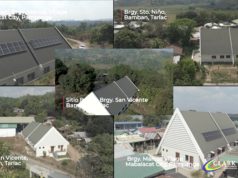CLARK FREEPORT – Renowned architect and urban planner Felino Palafox Jr. urged yesterday contractors for substandard government projects such as school buildings to become whistleblowers “to save millions of lives” in case an earthquake of the magnitude that devastated Bohol province happens in Metro Manila or any part of the country.
“I don’t care anymore whether I cross more people and get sued for what I am saying, but there are studies way back in 2004 saying 37,000 lives would immediately be snuffed out in Metro Manila in case an earthquake similar to Bohol strikes in Metro Manila,” Palafox said in a telephone interview with Punto..
Palafox was being brought to a hospital when reached on the phone, but insisted on going on with the interview “so the people may know.” He said he was earlier being interviewed by Discovery Channel in his Makati office on the same issue when he started having chest pains.
“I challenge the contractors of politicians to come out now. Where do people go whenever there are disasters?
They go to government buildings such as school buildings,” he said. Palafox urged the government to conduct a “structural audit” of buildings in Metro Manila and other parts of the country, especially those built using pork barrel funds.
“We are talking of millions of lives here, not to mention the cost to properties and the manhours lost from disasters,” he added. Palafox is the country representative of the Council on Tall Buildings and Urban Habitat (CTBUH), an international not-for-profit organization supported by architecture, engineering, planning, development and construction professionals.
The CTBUH is the world’s leading body in the field of tall buildings and the recognized source of information on tall buildings internationally, setting the standard for the title of “The World’s Tallest Building.”
Citing scientific studies, Palafox said that a significant earthquake in Metro Manila is known to occur in a 200- to 400-year cycle. “We are again in that cycle point,” he warned. Palafox said that a study done in 2004 on the effects of an earthquake in the magnitude of the temblor that recently hit Bohol was updated two years ago.
“Such earthquake would divide Metro Manila into four and that seven bridges in the metropolis would collapse,” he noted. He said the Philippine Institute of Volcanology and Seismology and the Metro Manila Development Authority have copies of the updated study.
He urged the two agencies to be more open about the study. Palafox said the study indicated that buildings 30 stories tall and below are more vulnerable to earthquake damage. “Only two percent of buildings 30 stories up in Metro Manila would be seriously affected, while about 30 to 40 percent of buildings with lesser stories are vulnerable,” he noted.
At the same time, Palafox said that such buildings could still be retrofi tted to make them less vulnerable to strong temblors. He stressed that even old heritage churches in the Philippines would also be retrofitted.
“Why is the Empire State Building in New York still standing? It will be a hundred years old next year. Also the Roman Colosseum is still up,” he said. Palafox said that disaster management planning should incorporate measures against earthquake.
He noted that he had done a masterplan for such planning for San Juan City and that the plan was cited for an award in Berlin. “I don’t know if that plan was followed in San Juan, though,” he added. Palafox founded the Palafox Associates which became the first and only architectural, urban planning, interior design, and landscape architectural firm certified by TUV of Germany for Quality and Environmental Management Systems.




